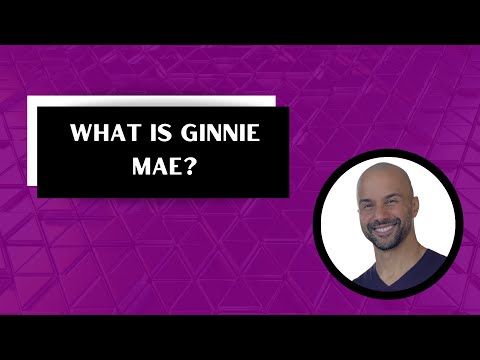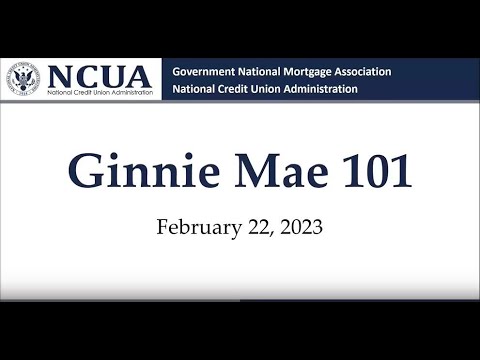Unveiling the Essence of Ginnie Mae: A Pillar of the American Dream
The Genesis of Ginnie Mae and Its Impact on Homeownership
Imagine a world where owning a home isn’t just a far-off dream, but an achievable reality for millions. That’s the world Ginnie Mae has been cultivating since its inception. Established in 1968 as part of the Department of Housing and Urban Development (HUD), Ginnie Mae – officially known as the Government National Mortgage Association (GNMA) – stands as a cornerstone in promoting accessible homeownership.
Ginnie Mae hit the ground running by ensuring that affordable housing was not just a slogan but a tangible outcome for families across the nation. Its commitment revolutionized the housing market, giving birth to opportunities that many never thought possible. It became the vehicle transforming the average Joe’s dreams into the keys to their own home.
Decoding the GNMA Operations: How Ginnie Mae Functions in the Housing Market
Diving deep into how Ginnie Mae functions is like unraveling the DNA of the housing market. At its core, Ginnie Mae backs mortgage-backed securities (MBS), a fancy term that essentially means they’ve got your back. They guarantee that investors receive their payments on federally insured loans, mainly through FHA or VA programs.
Here’s the inside scoop: lenders issue loans to happy homeowners and then bundle these loans into securities. Ginnie Mae steps in by guaranteeing these bundles, ensuring investors the timeliness of their principal and interest payments. It’s a win-win-win situation – lenders get to dust off their hands from risk, investors sleep soundly knowing their investment is secure, and homeowners get those affordable loans.

Evaluating the Economic Footprint of Ginnie Mae in the Mortgage Industry
The Symbiotic Relationship between Ginnie Mae and the Secondary Mortgage Market
It’s no secret that the secondary mortgage market can be as temperamental as a teething toddler. Enter Ginnie Mae, a stabilizing force that brings calm to the chaos. By providing that steadfast guarantee, they create a flow of liquidity, meaning there’s always cash in hand to keep the loans coming.
Ginnie Mae-backed securities are like precious blue diamonds – valuable and sought after. Investors lap them up because they’re reliably backed by the full faith and credit of Uncle Sam himself. This means that Ginnie Mae not only props up the mortgage industry but also fosters an environment where long-term investments sprout and thrive.
Ginnie Mae vs. Other Government-Sponsored Enterprises: A Comparative Analysis
It’s easy to get Ginnie Mae mixed up with its siblings, Fannie and Freddie. As of 2024, the key distinguishing feature is Ginnie Mae’s parentage – it’s a proud child of the government. While Fannie Mae and Freddie Mac operate under the eye of shareholders, Ginnie stands as part of HUD, enjoying its government-owned status.
What sets Ginnie Mae apart is not just who its daddy is though. It’s in how they deal with securities. Only Ginnie Mae has the powerhouse guarantee of the U.S. Government, giving it a gold-plated edge in the trust department. This singular attribute puts it in a league of its own, far above its private counterparts in terms of investment security.

| Attribute | Ginnie Mae (Government National Mortgage Association) Details |
|---|---|
| Established | 1968 |
| Ownership | Owned by the U.S. federal government |
| Parent Department | U.S. Department of Housing and Urban Development (HUD) |
| Purpose | To guarantee timely payments on mortgage-backed securities (MBS) |
| Backed Securities | Primarily backed by single-family mortgages |
| Association with Government Agencies | Works with FHA, VA, RD, PIH for loan insurance/guarantees |
| Explicit Government Backing | Securities explicitly backed by the full faith and credit of the U.S. Government |
| Eligibility for Issuers | Must be approved FHA mortgagees with good standing and experience |
| Type of Loans Backed | Loans insured by FHA or guaranteed by VA, among others |
| Key Benefits to Investors | Guarantee of timely payment of principal and interest on MBS |
| Distinguishing Factor from Fannie Mae | Ginnie Mae is a government organization while Fannie Mae is a shareholder-owned corporation |
| Relationship with Mortgage Market | Helps promote affordable housing by ensuring capital flow to mortgage lenders |
| Symbol Origin | Ginnie from “GN” and Mae from “MA” representing its acronym GNMA |
| Broad Objective | To make affordable housing more available through the mortgage loan industry |
Ginnie Mae’s Role in Supporting Specific Homeowner Groups
Championing Veterans’ Access to Affordable Housing with Ginnie Mae
If there’s a group that Ginnie Mae tips its hat to, it’s our brave veterans. Through the VA loan program, GNMA plays a critical role, giving those who’ve served a leg-up on the property ladder. These government-backed loans are like thank-you notes etched in stone – providing veterans with options that are both affordable and respectful of their service.
By ensuring VA loans, Ginnie Mae isn’t just helping a few individuals. It’s bolstering whole communities, fostering gratitude, and ultimately ensuring that the sacrifices made by our military personnel are rewarded with the comfort of a home to call their own.
Ginnie Mae’s Commitment to First-Time Homebuyers and Low-Income Families
It’s not all about the vets though. First-time homebuyers and families watching their pennies can find solace in Ginnie Mae’s arms. With GNMA’s stamp on FHA and other government-insured loans, the doorways to homeownership are thrown wide open for folks that might otherwise find them shut.
For those on a tight budget, programs like “affordable 55 And older Apartments For rent near me” are prime examples of how GNMA extends its caring arm to ensure everyone has a shot at their slice of our communal pie – a home.

The GNMA Guarantee: How It Protects Investors and Fuels Homeownership
Breaking Down the Ginnie Mae Guarantee: What It Means for Stakeholders
Talking about guarantees isn’t as fun as, say, a day at the beach, but hang tight – this is important stuff. Essentially, the Ginnie Mae guarantee is like a superhero’s promise – it’s unbreakable. Investors are protected, come rain or shine, because Uncle Sam’s got their backs.
But what about the lenders and borrowers? Well, lenders can sleep like babies because they’re not shouldering the risk alone. And for borrowers – this translates to better interest rates, lower down payments, and dreams turning into dreampads.
Risk Management and Performance: GNMA’s Track Record in the Face of Economic Fluctuations
Now let’s talk turbulence – you know, those economic storms that send markets into tailspins. Ginnie Mae’s track record has been like a well-built levee holding back the flood. When the seas get choppy, Ginnie Mae’s guarantees have withstood the test, ensuring the very foundations of the mortgage industry remain rock solid.
Investors particularly love this about Ginnie Mae. Knowing their investments are secure regardless of the economy’s mood swings makes these securities as coveted as a “blue yeti” in the wild – rare and immensely valuable.

Probing into Ginnie Mae’s Regulatory Framework and Future Outlook
Navigating Regulatory Waters: How Ginnie Mae Adapts to Changing Legislation
Ginnie Mae’s context is ever-changing, much like the waters of the legal seas it navigates. Its course is subject to the ebbs and flows of legislation, with updates popping up that could give lesser entities whiplash. Yet, GNMA continues to adapt and pivot with the grace of a swan on a still lake.
Recent years have seen a flurry of changes, but Ginnie Mae stays in lockstep with the times, ensuring that it maintains its position as a beacon of reliability in the eyes of the public and the mortgage industry alike.
What’s on the Horizon for Ginnie Mae? Projecting Future Directions
In the world of mortgages, predicting the future is about as easy as a “house drawing easy” tutorial, but we can make educated guesses. Ginnie Mae stands at the precipice of the future, ready to evolve in line with industry trends.
Given its track record and sturdy role, it seems likely that GNMA will continue to support and enforce programs geared towards homeownership for all, keeping a keen eye on sustainable and green initiatives that are gaining traction in the housing market.
Ginnie Mae: Fostering Sustainable Homeownership and Community Growth
The Tangible Benefits of Ginnie Mae-Backed Securities for Neighborhood Development
A vibrant community is often the sum of its parts, and homeownership plays a significant role in that equation. Through Ginnie Mae’s backing, entire neighborhoods can access the capital needed for growth and vitality.
Consider the “simple house design” – it embodies the ideal of affordable, accessible living. By backing securities that fund such projects, Ginnie Mae lays down the first bricks of future communities where pride can blossom within the walls of each dwelling.
Sustainable Housing Finance: Ginnie Mae’s Role in Promoting Long-Term Homeownership Solutions
Ginnie Mae isn’t just about getting folks through the door – it’s about ensuring they can stay there through thick and thin. By backing loans that are not just affordable upfront but manageable in the long-run, GNMA is at the forefront of sustainable homeownership.
Whether it’s through existing programs or the development of new green lending practices, Ginnie Mae’s involvement in promoting long-term and eco-friendly homeownership solutions remains a beacon of hope for many American families.
Ginnie Mae Trivia: Dream Weavers in the Housing Market
Whoa, Ginnie, Who Are You?
Bet you didn’t know that Ginnie Mae isn’t a person but a pivotal player in the housing finance market! Founded in 1968, this government corporation has been working behind the scenes like a wingman for homeowners, ensuring that lenders have the capital to offer affordable mortgages. So, while Ginnie Mae might not come over to help paint your picket fence, it sure does its part so you can own it!
A Not-So-Secret Garden of Mortgage Magic
Heads up, here’s the scoop: Ginnie Mae doesn’t actually make loans or collect mortgage payments. Instead, it guarantees securities that are magically backed by pools of mortgages. Think of it like this—banks and lenders make the loans, then Ginnie steps in, waves its wand, and transforms these loans into securities for investors. Abracadabra! Now that’s what you call financial alchemy!
Dollars and Sense: The Ginnie Guarantee
Now, hold your horses. Ginnie Mae doesn’t just guarantee any old loan. We’re talking about loans insured or guaranteed by Uncle Sam—FHA, VA, RHS, you get the drift. And here’s an interesting penny for your thoughts: Because of Ginnie’s guarantee, investors get their hands on some pretty reliable payments. A smooth move that helps keep money flowing for property management services and all sorts of other housing needs.
Keeping It Real… Estate!
Can you believe it? Ginnie Mae has helped finance over 10 million homes! That’s a lot of welcome mats. And let’s be real, they’ve got their act together. With a portfolio that boggles the mind—over a trillion bucks in outstanding securities—they’re heavy hitters in the homeownership game. So whether you live in a humble abode or a snazzy residence, Ginnie Mae has probably had its hand in helping someone on your block.
Shake On It! Ginnie’s Commitment
It’s not all about the Benjamin’s with these folks. Ginnie Mae takes its job seriously—like, pinky-promise seriously. By ensuring the liquidity of government-insured mortgages, they’re making sure that folks can actually afford to make their homeowner dreams come true. And let’s be honest, that’s a mission that deserves a tip of the hat.

What’s the difference between Fannie Mae and Ginnie Mae?
Well, get ready to clear up the fog around these mortgage giants. Fannie Mae and Ginnie Mae are both heavy hitters in the home loan arena, but they sit in different corners. Fannie Mae’s a player in the secondary mortgage market, snatching up mortgages from lenders and wrapping them into securities for investors. Now, Ginnie Mae? It’s got a similar gig, but with a twist—it only deals with loans backed by Uncle Sam, like FHA and VA loans.
Is Ginnie Mae the same as FHA?
Hold your horses, they’re like cousins, but not twins. Ginnie Mae and FHA are different entities; Ginnie Mae ensures that investors get their money back on government-backed loans, while the FHA is the actual provider of some of those loans. One’s got the investors’ back, and the other’s making sure borrowers can actually get a loan.
Why is it called Ginnie Mae?
Why is it called Ginnie Mae? Now that’s a quirky question. It’s like a friendly nickname for the Government National Mortgage Association—imagine calling your friend Jonathan “Johnny.” It’s just a lot snappier, and hey, it sticks!
Is Ginnie Mae backed by the US government?
You betcha, Ginnie Mae is like the superhero of government backing, giving investors that warm and fuzzy feeling. It’s fully backed by the U.S. government—let’s just say, if Ginnie Mae’s behind it, Uncle Sam’s got your back.
What is Ginnie Mae in simple terms?
Ginnie Mae in simple terms? Picture it as the middleman with a government badge, making sure that when you invest in mortgages, your bucks are safe and sound. It’s like the connector between Uncle Sam’s loans and the folks who put cash into them.
What’s the difference between Freddie Mac and Fannie Mae and Ginnie Mae?
Alright, so Fannie Mae, Freddie Mac, and Ginnie Mae walk into a bar—the differences are anything but a joke though. Freddie and Fannie are government-sponsored enterprises buying mortgages from lenders, and Ginnie’s the wingman for government-insured loans. Think of them like a trio—each playing their part in keeping the mortgage cocktails flowing.
What are the three types of loans covered by Ginnie Mae?
Talk about having options, Ginnie Mae’s got a trio of loans covered: FHA loans, VA loans, and RHS loans. Whether you’ve served in the military or you’re looking to settle in rural America, Ginnie’s got something for you.
Does Ginnie Mae own my loan?
Nope, Ginnie Mae doesn’t actually own your loan; it just makes sure your lender doesn’t get cold feet. Its job is to guarantee that investors get paid, not collect your mortgage payments.
Which is better FHA or Fannie Mae?
It’s like asking whether you’d prefer a burger or a pizza—it depends on what you’re after! FHA loans are fab for lower credit scores, while Fannie Mae is the go-to for a traditional mortgage. So, your choice might hinge on your financial health and housing needs.
Who runs Ginnie Mae?
Who runs Ginnie Mae? It’s not some mortgage wizard, but a government agency under the Department of Housing and Urban Development’s umbrella. A team of experts keeps the ship sailing smooth.
Does Ginnie Mae issue debt?
Does Ginnie Mae issue debt? Heck yeah! It offers something called mortgage-backed securities, and that’s not chump change. It’s serious business, ensuring that the dough keeps flowing for home loans.
Who regulates Ginnie Mae?
When it comes to regulation, Ginnie Mae’s got a big brother watching over—it’s under the supervision of HUD (that’s the Department of Housing and Urban Development, by the way), keeping things in check.
Are Ginnie Mae funds safe?
As safe as houses, or so the saying goes. Given Ginnie Mae’s backed by the full faith and credit of the U.S. government, investors can sleep a little easier. It’s like having a sturdy umbrella in a financial storm.
Is Ginnie Mae tax free?
Is Ginnie Mae tax free? Well, not exactly. While you won’t pay state or local taxes on Ginnie Mae interest, Uncle Sam still wants his cut at the federal level. So, be prepared to share a slice of that pie!
Is Ginnie Mae a good investment now?
Is Ginnie Mae a good investment now? Hey now, don’t expect any hot stock tips here! But let’s just say with the government guarantee, stability is its middle name. Just make sure it fits your investment wardrobe.
Is Ginnie Mae part of Fannie Mae?
Is Ginnie Mae part of Fannie Mae? Not at all. They might go to the same parties, but they dance to different tunes. Fannie’s more freestyle, while Ginnie’s got that government groove.
What exactly does Fannie Mae do?
What exactly does Fannie Mae do? In a nutshell, it flips mortgages like a short-order cook flips pancakes, buying them from lenders so those guys can lend even more. It’s all about keeping the housing market hotter than a summer barbecue.
What are the three types of loans covered by Ginnie Mae?
Who’s eligible for Ginnie Mae? It’s not about who, but what—loans, that is. If your mortgage is government-insured or guaranteed (think FHA, VA, or RHS Loans), then it’s in Ginnie’s club. If you’ve got one of those, take a bow—Ginnie’s got your back.



